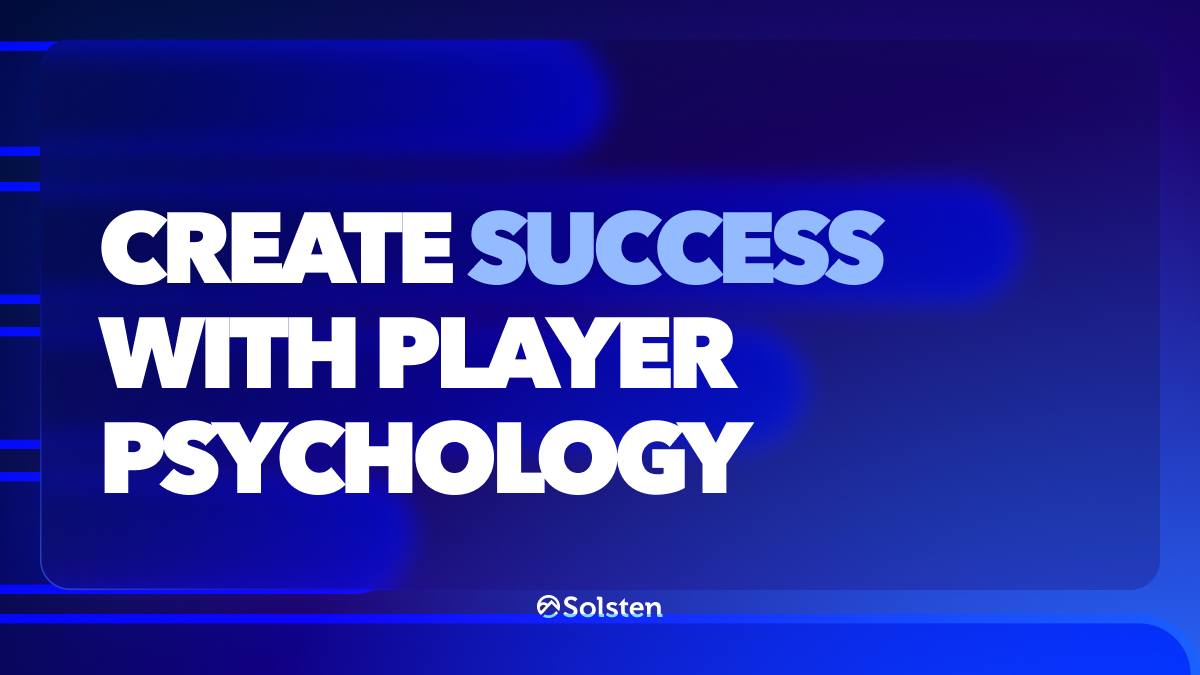In today’s highly competitive gaming landscape, even the most talented teams are having trouble launching a game. This is especially true for early-stage studios hustling to get their first game out the door. So many have watched years of hard work and countless late nights result in games that don’t find an audience — or even worse, don’t get released at all.
Traditional player research takes months and costs thousands. Most indie studios don’t have these resources. But what if you could understand your target audience’s psychology through simple conversation? Tools like Elaris now make deep player insights accessible to any developer, turning audience research from a luxury into a practical first step.
In this article, we’ll reveal a simple three-step process that indie studios are using to build games that resonate with their audience from day one, using psychological insights instead of expensive guesswork.
Don’t Let Your First Game Become a Learning Experiment
It’s true that successfully completing a game is no small feat. But in reality, that’s just the start. True success comes with high player engagement, strong retention, rave reviews, viral buzz, and sustainable monetization. That’s what will propel a studio to build a second and third game, creating lasting success in the industry.
To create a successful game, it’s essential to find your audience. But how do you do this at the breakneck speed that startups operate at? Without the luxury of six months to devote to in-depth research studies, new studios often rely on instinct and make assumptions about their target audience.
If they have the budget, there are platforms that promise competitive analysis. These platforms offer market data and get granular with elements like game features, monetization strategies, genre, art style, and theme. But copying popular game elements or mechanics is no longer a path to success. In fact, taking this approach can result in expensive mistakes, causing your game to go unnoticed and unplayed.
This can be disastrous for both your game’s success and your financial stability. In today’s market, it won’t be easy to raise additional development funds to replace what amounted to a costly learning experiment.
How Player Psychology Changes Everything
The best games tap into player psychology, whether the developers know it or not. When a game is successful, developers often try to replicate that success. Unfortunately, they typically only copy visible features or demographics, thinking that’s where the magic happened. What they miss is the underlying psychology behind player motivations – where the real value lies.
The real key to standing out lies in creating something truly remarkable, something that captivates your players. And that’s where player psychology comes into play. By understanding the psyche of your target audience, you unlock knowledge about their motivations, desires, and preferences. You can create something they will love because it feels like it was made just for them.
“But wait,” you might say, “how can I understand my players when I haven’t made a game yet?”
The answer is Elaris, Solsten’s AI-powered audience intelligence tool that’s specifically trained on psychological data from millions of people worldwide. Unlike general AI tools like ChatGPT or Claude that rely on generic internet data, Elaris is built on the world’s largest psychological database, representing 3.4 billion players across every genre and demographic.
Here’s what makes Elaris different from other AI tools:
Gaming-Specific Intelligence: While general AI can give you generic advice about game development, Elaris provides insights based on actual psychological data from real gamers. Ask “What motivates puzzle game players?” and you’ll get answers based on psychological profiles from millions of actual puzzle players, not web articles about game design.
Psychological Depth: General AI tools can tell you what successful games have done, but Elaris reveals why players are drawn to certain experiences. Instead of copying features, you’ll understand the psychological drivers that make features successful.
Instant, Specific Insights: Rather than sifting through generic game development advice, you can ask specific questions about your exact audience and get immediate, data-backed answers that inform real design decisions.
The number one reason video games fail is that they don’t find their audience. Elaris makes understanding your audience accessible to any developer. Here’s a proven three-step process that indie studios are using to build games that resonate from launch.
Step 1: Ask About Your Target Audience
Start by exploring your intended audience through Elaris. Ask questions that help you understand the psychological landscape of your target players:
- “What psychological traits define successful indie games in my genre?”
- “What motivates players who enjoy [your inspiration games]?”
- “How do mobile strategy players differ from PC strategy players psychologically?”
- “What personality types are drawn to cooperative multiplayer games?”
This conversation reveals audience psychology that should guide every design decision. Instead of guessing what players want, you’ll understand what drives them at a fundamental level.
For example, you might discover that your target indie puzzle audience values mastery and progression over social competition. This insight immediately informs whether you should focus on increasingly complex puzzles or social leaderboards.
Discover your audience psychology in minutes
Traditional market research takes months and costs thousands. Elaris provides instant insights about any gaming audience through simple questions. Start free and explore what drives your target players psychologically.
Step 2: Understand What Drives High-Value Players
Once you have a general understanding of your audience, dig deeper into the psychological drivers that predict long-term engagement and value:
- “What personality traits predict long-term engagement in strategy games?”
- “How do competitive players differ from cooperative players psychologically?”
- “What motivates players to spend money in indie games?”
- “Which psychological traits correlate with high retention in puzzle games?”
These insights reveal the core motivations your game should satisfy. You’ll discover whether your audience is driven by achievement, social connection, creativity, mastery, or other psychological needs.
Some discoveries may surprise you and save you from costly design mistakes. For example, if you’re building a competitive game, you might assume your audience loves individual dominance. But you might discover through Elaris that your target players are actually collaborative competitors who prefer team-based achievement over solo victories. Imagine how different your game design becomes with this insight from the start.
Step 3: Design for Psychological Resonance
Use these psychological insights to inform your game design decisions. This is where understanding transforms into action, as you create features that align with your audience’s deepest motivations.
With Elaris insights as your guide, you can identify what will truly resonate with your players:
- Is it the thrill of mastery and skill progression?
- The satisfaction of collaborative problem-solving?
- The joy of creative expression and building?
- The excitement of discovery and exploration?
Whatever drives your audience, design your core features to amplify and fulfill these psychological needs. Ask follow-up questions like:
- “How do achievement-oriented players prefer to see their progress?”
- “What social features appeal to collaboration-focused gamers?”
- “How do creative players like to express themselves in games?”
This approach ensures your game mechanics serve genuine player psychology rather than copying what worked for other games with different audiences.
Turn psychological insights into game features
Understanding player psychology is just the beginning. Elaris helps you translate insights into specific design decisions that resonate with your audience’s core motivations.
Beyond the Basics: Ongoing Audience Understanding
Player psychology isn’t a one-time research project – it’s an ongoing conversation that can guide your entire development process. As you build your game, continue asking Elaris about:
- Feature prioritization based on audience psychology
- Monetization approaches that align with player values
- Marketing messages that resonate with psychological drivers
- Content updates that satisfy core audience motivations
This ongoing dialogue ensures your game stays aligned with what actually drives your players, not just what you think they want.
Success Through Psychology, Not Guesswork
Building a successful indie game has never been more challenging, but it’s also never been more possible to understand your audience before you build. Tools like Elaris democratize access to psychological insights that were previously available only to studios with massive research budgets.
The studios that succeed will be those that understand their players at a psychological level from day one. They’ll create games that feel inevitable – experiences that players didn’t know they needed until they played them.
Understanding your audience doesn’t require expensive research teams or complex platforms. With Elaris, any indie developer can access psychological insights that inform game design decisions from the very beginning. Start with conversation, build with confidence.
Transform your game development with audience psychology
Stop building games based on assumptions and industry trends. Start with psychological understanding of your actual target audience. Elaris makes deep player insights accessible through simple conversation – perfect for indie developers who need answers fast.



